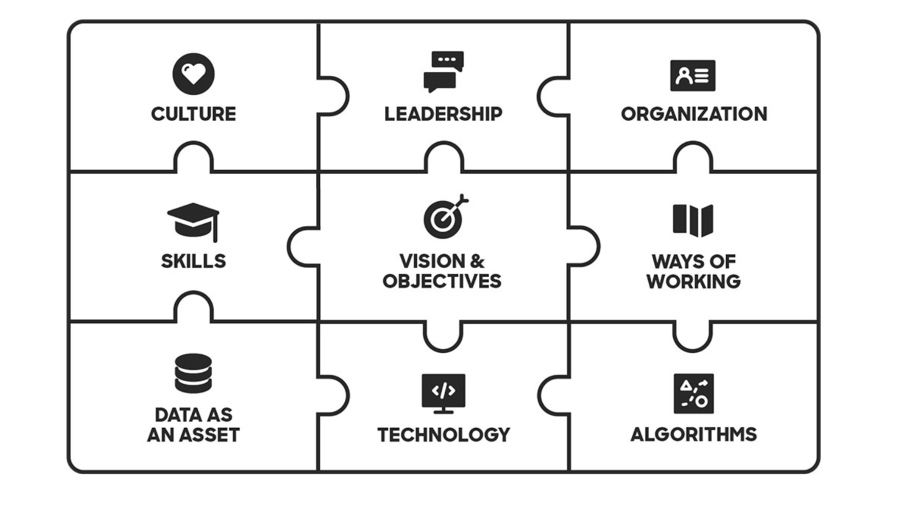This blog post explores the potential of various forms of AI in social and healthcare services, aiming to illuminate how technology can improve patient care, increase efficiency, and reduce costs.
Proactive healthcare and personalised care
The key opportunity created by AI is the shift in healthcare from a reactive model to proactive and personalised care. In the current social and healthcare environment, preventive care and personalisation often seem like jargon, as these approaches typically entail higher costs and increased manpower under existing models.
The machine should do the machine’s job, and the human should do the human’s. By analysing large amounts of health data, AI can predict health risks for groups and individuals, identify gaps in care, and help prevent diseases before they occur. For example, AI can identify risk factors for cardiovascular disease based on a patient’s history and lifestyle, enabling preventive measures such as lifestyle changes or early medication. Visionary research, such as the FINRISKI studies (3), has been carried out in Finland, the data and results of which could be exploited in the development of AI applications.
Improving efficiency and accuracy
The emphasis on efficiency and precision is causing nursing professionals to feel overwhelmed, as the current system is already maximised by increasing demands on people. Machines, however, are still being let off too easily today. In nursing, the use of AI will allow healthcare professionals to diagnose diseases more accurately and faster. In imaging examinations such as X-rays or MRI scans (4), AI algorithms can identify signs of disease that may be missed by human inspection. Furthermore, the machine can use all previous cases and their abnormalities as the basis for its analysis, rather than relying solely on the case history and data of a single doctor. This speeds up the process of obtaining the correct diagnosis and initiating the appropriate treatment (5). For the caregiver, knowledge of the patient’s increased risk could help to improve the quality of the patient’s health.
Optimising resources
In social and healthcare, the main concern right now is the efficient use and adequacy of resources. The machine is at its best when automating routine tasks such as making appointments and managing patient records. This frees up nursing staff time for patient care. AI can also manage resources by anticipating changes in service needs, such as spikes in demand, and planning workforce resources flexibly based on need. Intelligent solutions that respond to change can create a more flexible working life for people.
Improved patient experience
From the patient’s perspective, AI-powered digital health assistants and tools provide 24/7 support and advice, improving patient satisfaction and engagement in their own care. For example, patients can inquire about their symptoms and receive real-time advice or guidance on taking medication. The machine can monitor night shifts continuously and be present in every patient’s daily life. It can support many clinical tasks, and even automation is possible with medical software and equipment under the Medical Device Regulation (MDR).
Patient safety, ethical use and privacy first
The integration of AI, like all technology in care, requires careful planning from a security and privacy perspective. For nursing staff, the idea of a machine entering these areas of responsibility is daunting, as patient safety is a top priority for all nursing professionals. Fortunately, effective regulations for the use of machine reasoning as part of care are already in place. When developing applications for medical use, there are international standard requirements and controls that, when met, ensure patient safety is taken into account (6).
In addition to suitability for use, there are several technical requirements that apply to all data processing. It is crucial to ensure that patient information is protected and that the use of machine reasoning is transparent.
Social and healthcare organisations should also engage in an ongoing dialogue with stakeholders, such as legislators, researchers, and developers, on the role and responsibility of A (7). It is reassuring for any social and healthcare decision-maker considering how to use AI that the knowledge and expertise to do so is available. The remaining task is to identify where it is needed.
Benefits for every stakeholder
Finland is one of the world’s fastest-ageing countries, presenting significant challenges in organising services. An ageing population is living longer, but with ageing comes an increase in various health issues, such as dementia and chronic illnesses, which require more services and care.
Patients should expect better and more personalised care through the use of AI. Intelligent health applications enable self-care and prevention, improving patients’ quality of life and disease management. For example, for about ten years now, diabetics have been able to use smart applications to monitor their blood glucose levels and adjust their insulin doses in real-time, reducing the risk of complications and promoting a more active lifestyle. Similarly, in the future, AI could diagnose diabetes from a patient’s voice (8). The support available for living with a disease is valuable from both the patient’s and the service provider’s perspective.
For healthcare professionals, AI provides tools that enhance diagnostic accuracy and speed up treatment processes. Machine learning and algorithms support doctors and nurses by offering more comprehensive information about patients’ health, enabling more targeted and effective treatments. AI solutions that assist professionals and, for example, carry out data collection are known as supportive intelligence. With supportive intelligence, job tasks are expected to evolve so that more work is done with the machine without the need for keyboard and mouse input. Work is also expected to become more productive and controlled. An example of supportive intelligence is the use of dictation solutions by doctors to input information into patient records, and in the future, AI could potentially automate suggestions for entries based on listening to consultations.
Healthcare organisations benefit from AI’s ability to analyse large amounts of data, improving decision-making and resource utilisation. By using AI for forecasting, the alignment of service demand and service delivery can be optimised, and a better understanding of what the organisation’s operations should look like in the future can be achieved (9). The productivity potential of intelligent automation is substantial; expert assessments and research indicate that the overall potential for productivity improvement is in the range of 20-50%, with some individual tasks seeing improvements of up to 70-80% (10). By leveraging the possibilities of technology, it is possible to manage the tasks entrusted to the organisation more systematically and to implement the desired changes in operational practices.
Real-world examples
What practical use cases can we see when discussing changes in social and healthcare?
Surgical Risk Assessment – Case Oravizio
A system developed using AI assesses patient-specific risks before surgical procedures. This improves the success rate of surgeries and reduces complications, speeding up patient recovery and decreasing societal costs. Read more.
Pain medication near-diagnostics – Case Fepod
New technology allows for rapid measurement of pain medication levels from a drop of blood, accelerating treatment decisions and improving patient safety. This innovation combines cloud technology and machine learning for efficient analytics.
Utilising AI in benefit processing – Case Kela
Kela is exploring the use of AI to improve customer service and streamline service production. AI can identify and implement effective social service concepts, enhancing the citizen service experience and optimising resource use. Read more.
As other fields have digitalised over the years, healthcare and medical practices will also undergo digital transformation. Preparing for this requires knowledge of regulations and new technologies, but even more valuable is the insight into which parts of the work should change and what would bring the most value to operations. It is time for the machine to meet the expectations placed upon it in the field of medicine.
Strategic recommendations for organisations
Healthcare organisations should consider the following strategic recommendations for integrating AI:
- Invest in technology and expertise: Organisations must invest in both AI technologies and staff training. This ensures that the benefits of technology are maximised and that staff are ready to use new tools. The accompanying image presents perspectives that a data-driven organisation should focus on to optimally benefit from data usage.
- Pilot and scale prudently: Start with small pilot projects, evaluate the results, and scale up successful solutions. This helps identify potential problems early and reduces risks associated with large investments.
- Focus on ethical use, patient safety, and legal considerations: When implementing AI, it is crucial to ensure the protection of patient data and ethical practices. Transparency, fairness, harm avoidance, accountability, and privacy are recurring themes in defining AI responsibility (11). Transparent communication and clear procedures for data handling build trust in the technology.


